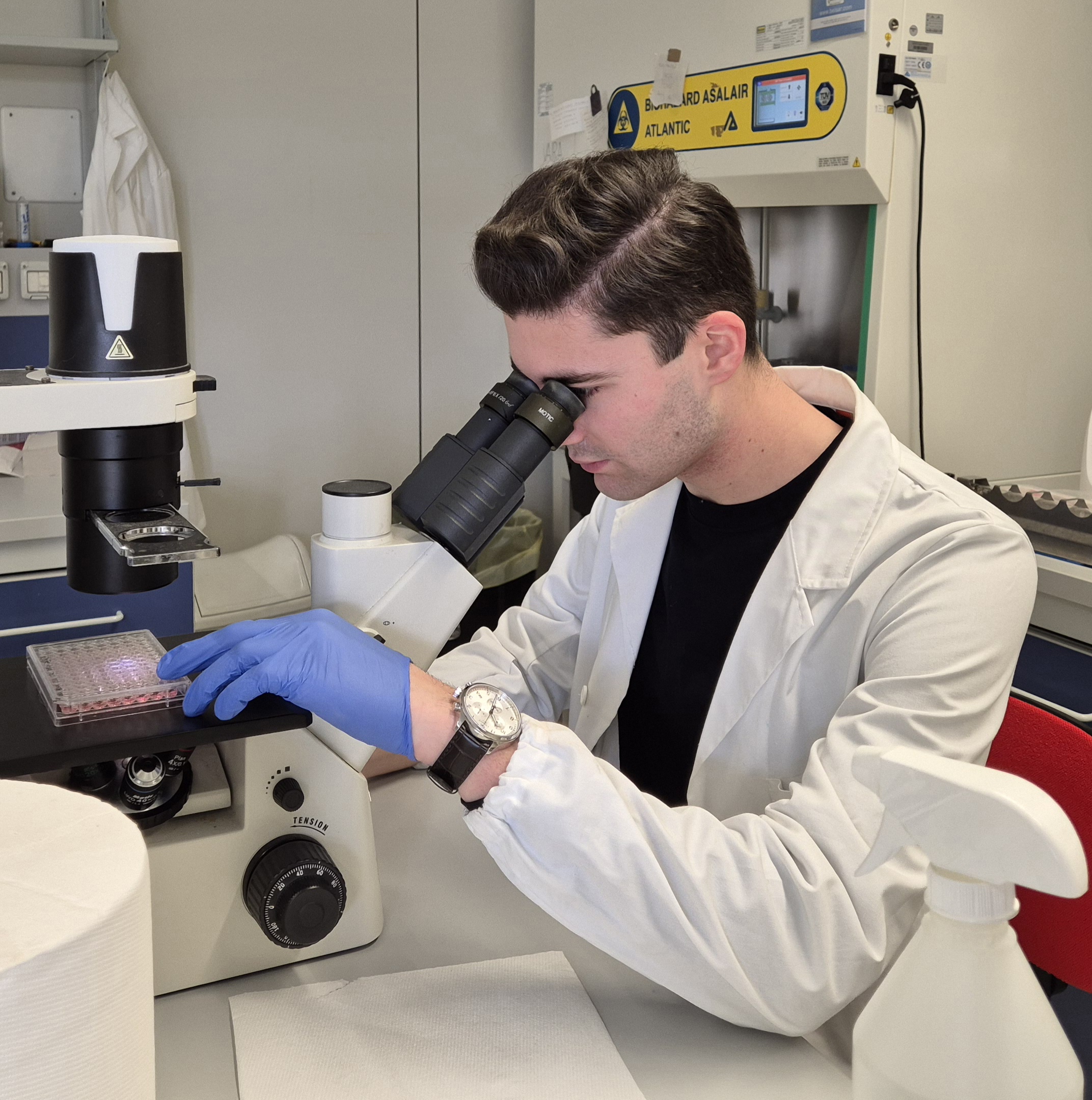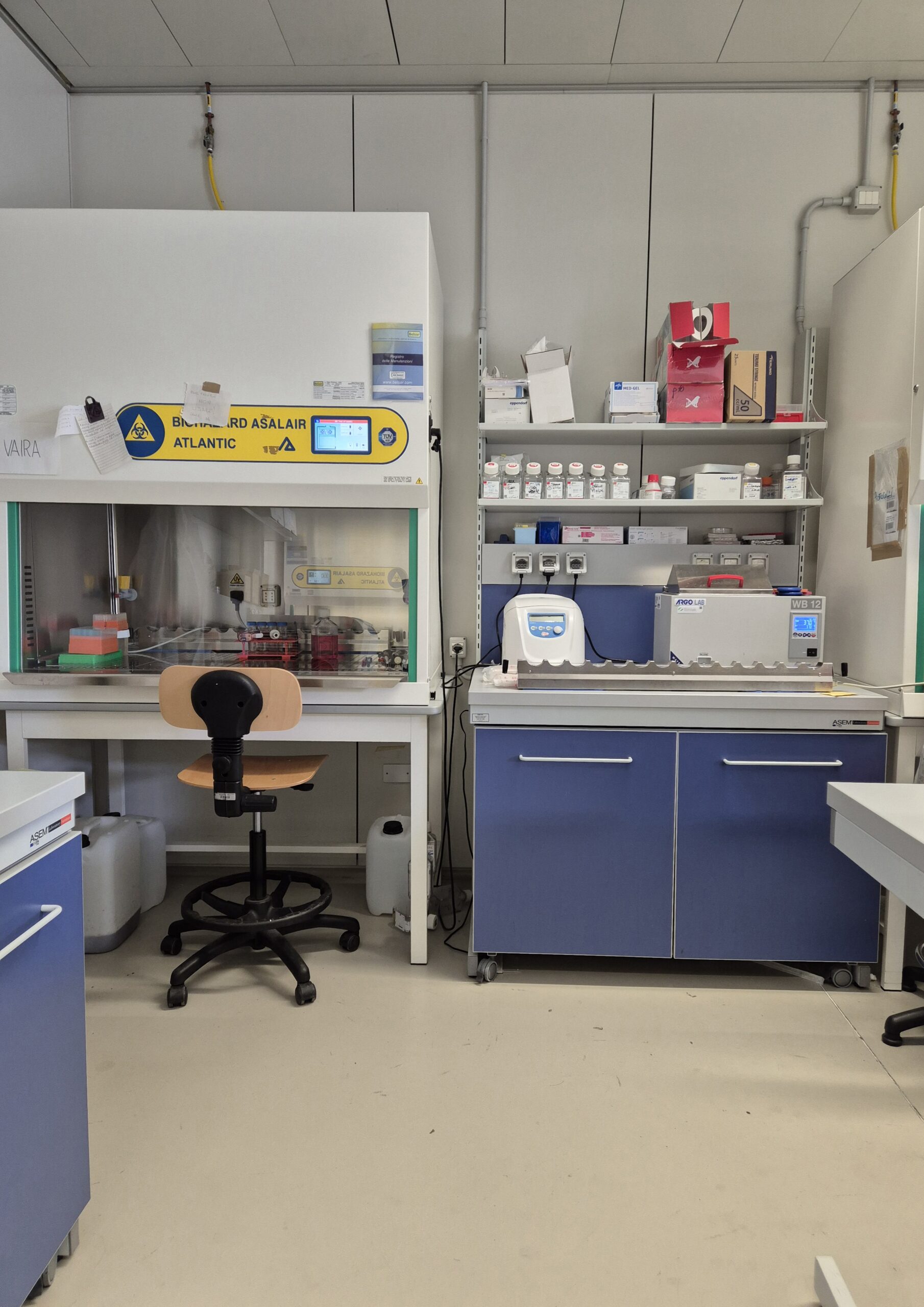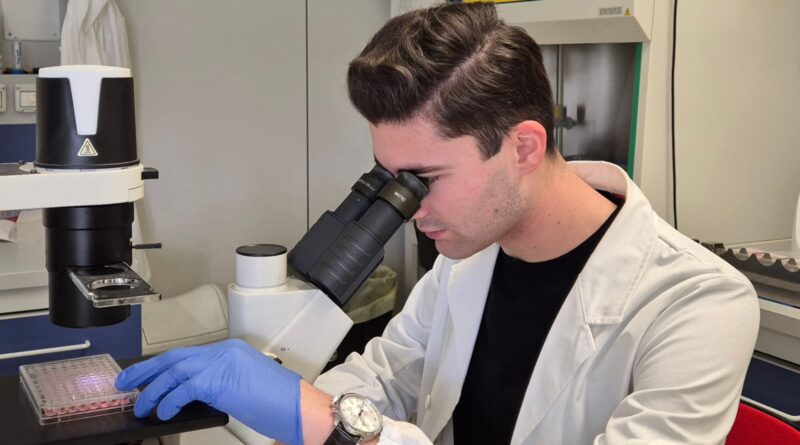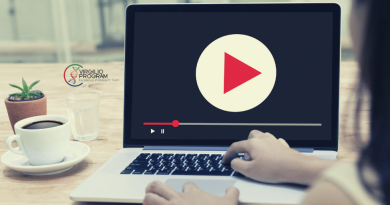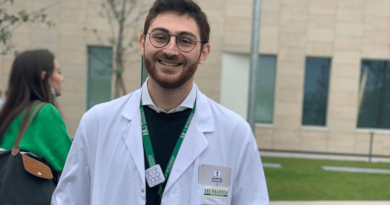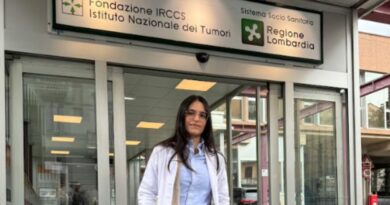Lab Experience at the Dino Ferrari Center – Gabriele Hamonet
Personal reflections 1st lab rotation
Gabriele Hamonet, Virgilio 7° Cohort Student, UNIMI
LAB EXPERIENCE AND PERSONAL REFLECTION
I got the opportunity to do my 1st lab rotation at the Neural Stem Cell Lab, one of the research facilities of the Dino Ferrari Center and the University of Milan, located in Foundation IRCCS Ca’ Granda Ospedale Maggiore Policlinico, Milan.
PI: Prof. Stefania Corti
Tutor: Dr. Linda Ottoboni
The lab focuses on cellular and molecular therapies for neurodegenerative diseases, especially motor neuron (ALS – Amyotrophic Lateral Sclerosis, SMA – Spinal Muscular Atrophy, SMARD1 – Spinal Muscular Atrophy with Respiratory Distress type 1), and neuromuscular diseases. This lab is specialized in the generation and culture of brain and spinal cord organoids, which are in vitro 2D and 3D organ models derived from iPS cells.
My experience & learnings:
In my first lab rotation I learned some basic lab techniques, such as plasma and serum isolation, Western Blot and DNA extraction, as well as more advanced and specific techniques, such as calcium imaging functional testing, a procedure used to study neuron electrical activity in ALS organoids vs control organoids. I also assisted the researchers in the daily management of iPS cells and organoid cultures and helped them in the preparation of immuno-fluorescence slides for the observation under confocal microscope.
Since it was my first lab experience, I initially found it challenging to keep up with the lab workload, especially in the first days. However, I received mindful guidance and safety instructions from the lab team, allowing me to improve my dexterity. As days passed, I grew increasingly confident with lab instruments and procedures. Consequently, the team gradually entrusted me with more autonomy, allowing me to perform practical activities, such as plasma and serum centrifugation and isolation and DNA extraction. I was also instructed about basic bioinformatics and how to use a specific software to calculate protein expression and cell counts.
Besides learning lab skills, I was allowed in lab meetings, where the team discussed the advancement of the work and the results of the experiments, and formulated hypotheses. I was also asked to prepare and present a brief report about observations patterns of specific proteins in immuno-fluorescence imaging. In order to complete this task, I had to consult scientific literature and papers. Therefore, I practiced critical reading of scientific papers and learnt how to collect good and reliable information.
Moreover, I had the opportunity to attend very interesting online seminars, held by Prof. Corti and other experienced scientists, exposing their latest experiments and advancements about neuromuscular and neurodegenerative diseases, such as ALS and Parkinson’s disease. This allowed me to keep up to date with the latest discoveries on the pathogenetic mechanisms of these diseases.
This stimulating environment really helped me develop scientific reasoning. I experienced significant growth in my critical thinking, which encouraged me to delve deeper into scientific problems, to formulate multiple hypotheses and explore optimal testing methods.
Perhaps, the most valuable lesson I learnt in this lab experience is that research is not only a daily challenge, but also a mindset-a way of approaching and investigating problems. As I could see, experimental results are often unexpected, sometimes even frustrating, but always leading to new questions and hypotheses.
I am sure that everything I learnt and practiced during these 4 weeks will allow me to approach future research experiences in a more confident and mindful perspective. Furthermore, I have no doubt that scientific reasoning and critical reading skills will help me in my everyday academic life and in my future medical activity.
Finally, I would like to express my sincere gratitude to Dr. Mafalda Rizzuti and Dr. Valentina Melzi for their mindful guidance, and to Dr. Lorenzo Brambilla for his support.
